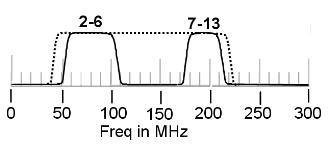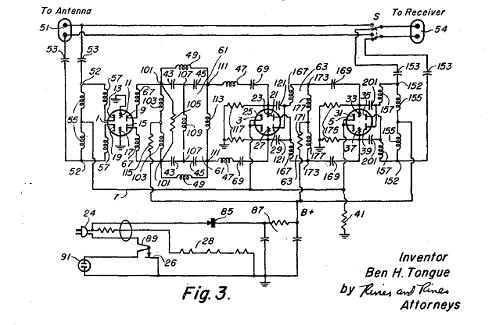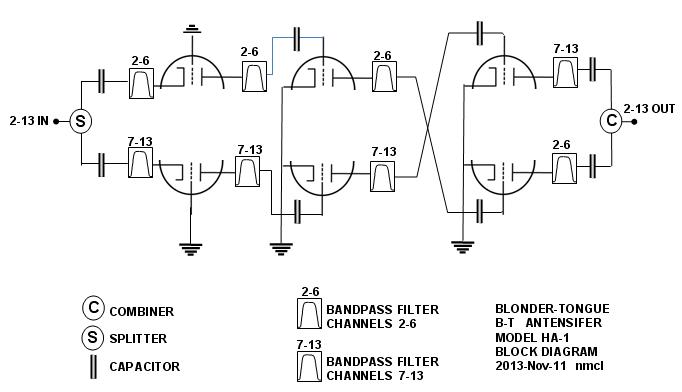Blonder-Tongue HA-1L Amplifier
|
Ben Tongue describes this amplifier on his website as follows:
This first Blonder-Tongue product was a low-noise, broadband, fixed-tuned 12 channel VHF TV booster amplifier that used four tubes. It employs a patented RF coupling circuit invented by Ben H. Tongue and was used to improve fringe area TV reception. This unit and its successors were produced from 1950 through about 1960: Model HA-1L. (Tongue, 2011) |
| Blonder: Sales went through the roof causing us to move from Yonkers [New York] to Westfield [New Jersey] for additional space. Tongue: Lima Radio in Ohio. Radio Equipment in South Bend ordered by the gross and as we would ship against the standing orders they simply topped up the order. From May 1950 to end of year, B-T Labs had a net profit of $5,420.21 on our initial funding of $5,000. After moving to larger quarters and greatly increasing production, our net profit for the first four months was $40,232.38. B-T through the 1950s sold almost exclusively through established general-line distributors although a Television Digest study in the late 50s found 26% of all known CATV systems had "B-T Headends." It is likely an even higher percentage of the unknown-unlisted systems were B-T equipped. Blonder: We basically avoided selling direct to CATV because they had no money and would take a year to pay even a small bill for one amplifier. |
As we noted on the previous page, two versions of this amplifier were released:
• Model HA-1, a three-tube version.
• Model HA-1L, a four-tube version.The patent mentioned above (2,710,314) describes the model HA-1. The following information was based on the patent application for the HA-1.
Ben Tongue's design for the "Antensifier" amplified the two VHF Bands (2-6 and 7-13), but only those bands. The following sketch illustrates the two passbands (solid lines) along with the SKL 40-200 MHz passband (dotted line).
Although Tougue's design was based on SKL's servo drive circuits, his design required substantially fewer vacuum tubes. This, in turn, resulted in reduced manufacturing cost, reduced maintenance costs, and improved reliability. Furthermore, by using dual-triode tubes, he was able to provide each band with three (or four) amplification stages.The three-tube design, as published in the patent, is shown below.
Circuit design of the Blonder-Tongue model HA-1 "B-T Antensifier" amplifier (Fig. 3 from US Patent 2,710,315).
At first glance, this may appear to be a conventional broadband push-pull amplifier. However, numerous components — resistors, capacitors, and inductors — placed between the amplification stages serve as filters, separating the low band (channels 2-6) from the high band (channels 7-13).The following block diagram may clarify this concept. In this block diagram, only the DC-blocking capacitors between amplification stages are shown.



